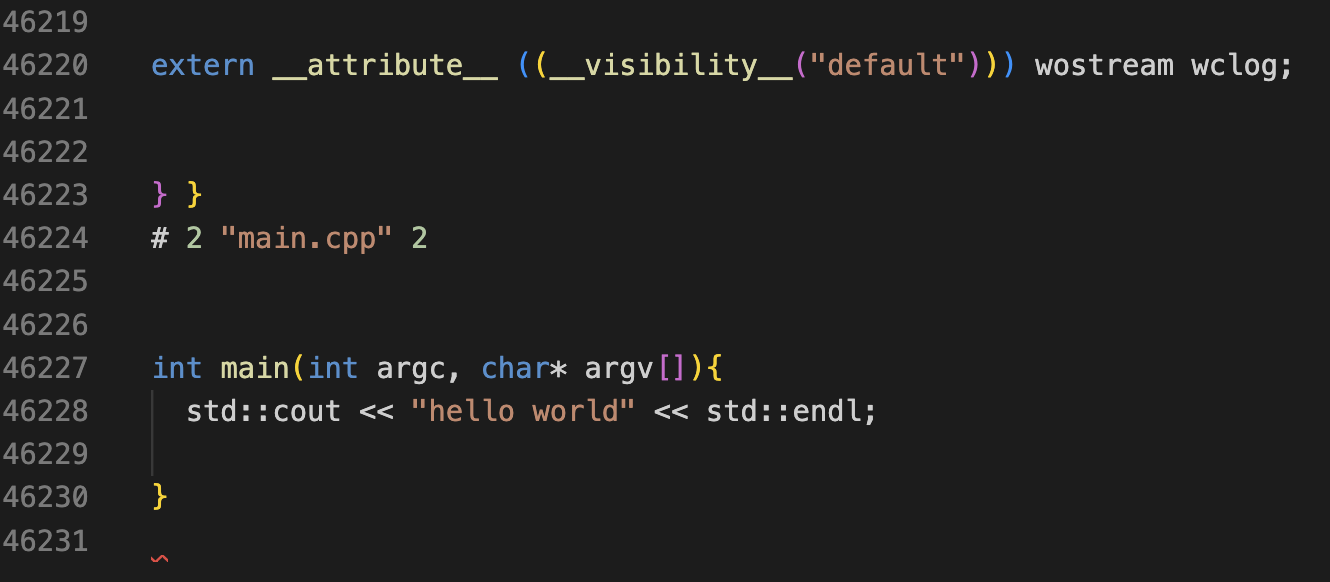C++ hello world编译过程
main.cpp
#include <iostream>
int main(int argc, char* argv[]){
std::cout << "hello world" << std::endl;
}
编译四步
1️⃣preprocessing, 2️⃣compilation proper, 3️⃣assembly and 4️⃣linking
使用g++ 编译
- 直接使用
g++ main.cpp
生成a.out文件, 直接运行,终端显示hello world - 按步骤编译
2.1 预处理(preprocessing)g++ -E main.cpp > main.i- 必须用重定向才能输出到文件。
-E的意思:编译器在做完预处理之后就停止,预处理后的源码直接输出到标准输出,忽略无需预处理的输入文件。- 打开
main.i
发现被替换的#include <iostream>长达4万多行···
2.2 编译(compilation proper)(为汇编文件)g++ -S main.cpp
- 生成main.s 文件
- -S 的意思:编译器在做完编译之后就停止,默认将文件后缀名替换为.s,忽略无需编译的输入文件。
2.3 汇编(assembly)
- 将汇编代码生成为目标文件(机器代码)g++ -c main.cpp 或者g++ -c main.s
- 默认生成 main.o
2.4 链接(linking)
- g++ main.o -L /usr/lib/ 默认生成a.out
- 用-o 参数指定输出文件名
标签:
C++





【推荐】国内首个AI IDE,深度理解中文开发场景,立即下载体验Trae
【推荐】编程新体验,更懂你的AI,立即体验豆包MarsCode编程助手
【推荐】抖音旗下AI助手豆包,你的智能百科全书,全免费不限次数
【推荐】轻量又高性能的 SSH 工具 IShell:AI 加持,快人一步
· 分享一个免费、快速、无限量使用的满血 DeepSeek R1 模型,支持深度思考和联网搜索!
· 基于 Docker 搭建 FRP 内网穿透开源项目(很简单哒)
· ollama系列01:轻松3步本地部署deepseek,普通电脑可用
· 25岁的心里话
· 按钮权限的设计及实现